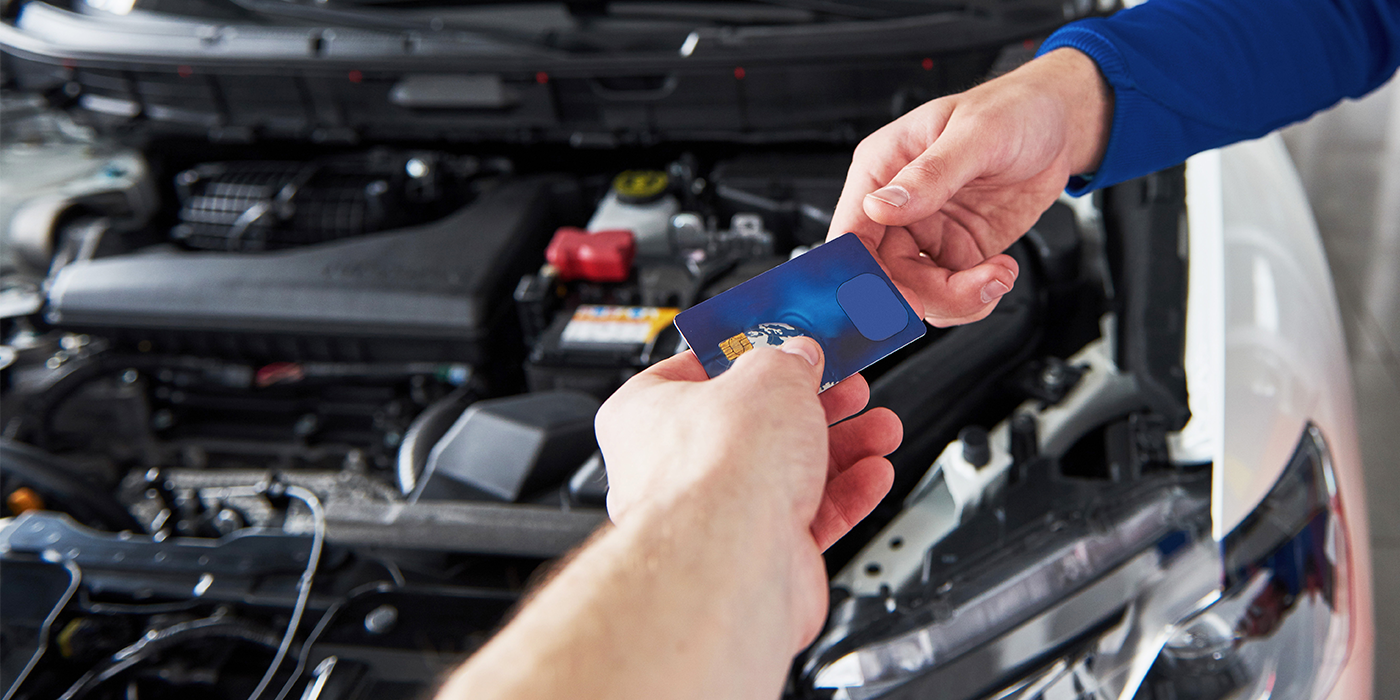 Virtually all tire dealers have a business plan that they revise periodically – and if they don’t, they should. Part of that business plan should be a comprehensive financial plan, one that is easy to review and will tell you what you need to know to be profitable.
Virtually all tire dealers have a business plan that they revise periodically – and if they don’t, they should. Part of that business plan should be a comprehensive financial plan, one that is easy to review and will tell you what you need to know to be profitable.
Whether you’re an industry veteran or are new to the tire business, read on to learn the “musts” of financial planning and analysis. Tire Review will feature an even more in-depth look at financial planning in a 2011 feature.
The most important factor in the success of any business is cash flow – the movement of money received and spent. It’s the pattern of income and expenses, and the consequences for how much money is available at any given time. Synonyms include liquid assets or, simply, the money on hand.
Some tire dealers don’t monitor their cash flow carefully enough, while others are tracking cash flow regularly to determine profitability. We will examine a number of factors in this article, but regardless of those factors, cash flow is paramount.
Financial Plan Components
While most tire dealers have a business plan, sometimes the financial section of that plan is sketchy. The financial section should outline a timeline for funding, use of funding and anticipated funding over the next two, three and even five years.
For new dealerships, monthly details for cash flow projections and an income statement for the first year of business should be included. Once established, quarterly information for two more years also should be included.
All of these elements of financing should coincide with the goals and visions of your business as stated in other sections of the business plan, including the financing necessary to cover operations, marketing and promotion.
Financial documents also should include a break-even analysis, balance sheet, projected profit and loss statement and a projected cash flow statement. The financial plan should contain the operations budget, which indicates how much is required to keep the business going. This includes salaries, wages, insurance costs, accounting costs, equipment costs, legal fees, taxes, cost of goods sold, advertising and promotional expenses and all other pertinent costs in each of the two budgets.
Basic Accounting Mistakes
Some tire dealers make basic accounting mistakes that cause financial chaos. All.business.com outlines the following common mistakes:
• Not saving receipts of less than $75
• Doing it yourself
• Forgetting to track reimbursable expenses
• Not properly classifying employees
• Lack of communication
• Not reconciling the books with the bank statement each month
• No backup
• Not deducting sales tax
• Petty cash nonchalance
• Not categorizing properly
Any of these errors in accounting can cause a real drain on cash, which is why it is so important to have a dependable financial system that gives you the information necessary to be profitable.
Financial Software Systems
Today’s software systems act as a safeguard against making mistakes like those listed above. While there are scores of systems available to tire dealers, the important factor is that they are properly used.
Savannah Tire Brake & Alignment Centers uses a JMK Accountancy system for its point-of-sale (POS) software, according to COO Trey Cook. “We download some of our financial data into Access and Excel from this system,” said Cook.
Dave Bucher, owner/president of Family Tire & Auto Service, uses the CornerStone POS accounting system, which he said is offered to Bridgestone/Firestone affiliated dealers.
The integrated software package allows dealers to effectively manage inventories, create easy-to-follow work orders for automotive repairs and print an organized and customer-friendly invoice while storing customer history. All of this allows dealers to enhance customer satisfaction and improve the accuracy and efficiency of their businesses.
In addition, the POS system has database marketing elements that allow dealers to remind their customers when it is time for regularly scheduled visits, as well as provide specific coupon offers. Dealers are able to be “hands-off,” as the system handles almost all elements of this marketing program.
Frequency of Tracking
Savannah Tire tracks its balance sheet monthly. “Each retail store has a stand-alone income statement that feeds into our balance sheet and a statement of cash flow,” Cook said. “We use the income statement and cash flow statement to measure profitability.”
As part of the monthly package submitted by its CPA, Family Tire gets an updated profit and loss statement and balance sheet for both of its stores. Bucher says, “The most important factor for me in judging the finances of our business is the profit or loss that I see on the P&L statement we get from our CPA each month. I can take these numbers and modify my business depending on what I see.” He notes that gross profit percentages, payroll and other controllable expenses can be modified depending on the outcome of these monthly P&Ls.
Savannah Tire’s bank also provides financial resources, in addition to some of its vendors. “We also are involved in a 20 Group that provides financial goals and benchmarks,” says Cook.
Tire retailer 20 Groups were formed by Dealer Strategic Planning Inc. (DSP) with the goal of helping dealers boost their bottom line profits by sharing best practices, financial benchmarking and access to industry experts. Each month, dealers receive a detailed financial analysis, which helps them track their performance against the group and industry benchmarks.
The 20 Groups meet three times a year for two-and-a-half days at a time. Prior to each meeting, dealers compile a list of their most pressing issues, which are addressed during the sessions. Meetings conclude with a “Best Idea Award” and the development of specific action plans that will then be reviewed at the next meeting. Dealers commit to actions and are then held accountable by their peers.
DSP’s Norm Gaither, an automotive industry consultant, also provides financial analysis.
One feature of the CornerStone system used by Family Tire is the daily tracking sheet that is automatically printed at the close of each business day. This sheet has an abundance of information, including daily and monthly sales, daily and monthly service sales, tire gross profit (GP), service GP, tire units and other factors. “This allows me to watch for trends throughout the month, instead of having to wait for the end-of-month financials, when it’s too late to make any necessary changes,” according to Bucher.
Financial Indicators Help Evaluation
Trey Cook echoes the cash flow advice by noting, “Number one is cash flow, and numbers two through seven also are cash flow. Following cash flow are gross profit, payroll analysis, accounts receivable (AR) ratios, inventory turns, net profit and, finally, EBITDA, an approximate measure of a company’s operating cash flow based on data from the company’s income statement.”
According to Investorwords.com, EBITDA (Earnings Before Interest, Taxes, Depreciation and Amortization) is calculated by looking at earnings before the deduction of these items. This earnings measure is of particular interest in cases where companies have large amounts of fixed assets that are subject to heavy depreciation charges (such as manufacturing companies), or in the case where a company has a large amount of acquired intangible assets on its books and is thus subject to large amortization charges (such as a company that has purchased a brand or company that recently made a large acquisition).
Since the distortionary accounting and financing effects on company earnings do not factor into EBITDA, it is a good way of comparing companies within and across industries. This measure also is of interest to a company’s creditors, since EBITDA is essentially the income that a company has free for interest payments. It is sometimes called operational cash flow.
On-Staff Accountant or Hired Gun?
There are a number of accounting certifications individuals may possess: certified public accountant (CPA), public accountant (PA), enrolled agent (EA), accredited tax advisor (ATA) or accredited tax preparer (ATP). Each has a place, depending on a tire dealer’s needs.
Savannah Tire plays it very safe with dual services. Cook says, “We have a full-time CFO and we have an annual review performed by a local CPA firm.”
Family Tire has an internal bookkeeper that just cuts checks and handles the weekly payroll. “She works 15-20 hours per week and handles both stores,” Bucher says. “I also have a separate CPA that does our monthly P&L statement, as well as all of our year-end items for both locations.”
When considering an internal accountant versus hiring the service from outside, it all depends on the needed services of an individual dealership. Some have both an inside financial person and an outside accountant or CPA.
Savannah Tire’s Cook says, “Cer-tainly someone with a minimum of a four-year accounting degree from a university or college would be my choice. I prefer someone with at least four to five years of real-world experience, but not necessarily in our industry. Honesty, integrity, confidence, a teamwork attitude and self motivation are all essential.”
“In addition to education, I think trust is the biggest factor when hiring an accountant,” says Bucher. “References must be checked thoroughly, and we also do a background check and drug test. Fortunately, our accountant is a family friend, which helps eliminate any trust issues.”
Managing Cash Flow
Bucher agrees with Cook regarding the importance of cash flow. “When I did the business plans for Family Tire, I included a cash flow analysis. As we all know, cash is king and we cannot run our business without it,” he says.
Most experts believe that the cash flow statement is the most important financial planning tool available to a tire dealer. It allows a dealer to manage the business for profitability and survival. The accountant for the business should provide the owner with data for three documents: a balance sheet, a profit and loss statement and a cash flow statement. If only one document is prepared, it should be the cash flow statement. Dealers should place cash flow ahead of profitability, at least for the short term, to stay in business.
A detailed cash flow statement should provide the dealer with information on the source of cash, the type of sales to look for (equity, debt, profit or asset), periods when cash is needed and the amount of cash a dealership needs during those periods.
SCORE, the Small Business Administration organization of executives who offer their counseling and expertise free-of-charge to small businesses, recommends a method for managing cash flow. SCORE advises:
Do the Math: Cash flow is the movement of money in and out of a business and most likely comes from the sale of goods or services to your customers. By projecting the inflow and outflow of your business’ cash, you can determine the amount of cash that will be available during a designated period of time.
Prepare Your Profit and Loss Statement: Your business plan should contain several financial statements. If you’re a start-up business, base your estimates of cash inflow and outflow on the revenues and expenses listed in your profit and loss statements. Com-plete your profit and loss statement before completing your cash flow statement. Over time, you will be able to base cash inflows and outflows on actual historical data.
Develop a Cash Flow Statement: A cash flow statement measures cash flow over time. During your first year in business, you should include a month-by-month cash flow statement in your business plan. If you’re seeking a loan, an important feature of your cash flow statement is that it will show the lender exactly how you’re going to afford loan payments.
Tracking Gross Margin
It’s important that tire dealers track their gross margin on a regular schedule. Gross margin is the percentage by which profits exceed production costs. To find gross margin, you divide sales, minus production costs, by sales.
For example, if you want to calculate your gross margin on selling tires, you need to know how much you paid for the tires, and what you collected by selling them. If you sold 10 tires at $100 each, and spent $70 per tire to buy them, your gross margin would be 30% – or $1,000 in sales, minus $700 in costs, divided by $1,000. Gross margin is not the same as gross profit, which is simply sales minus costs. In this example, it’s $300, or $1,000 minus $700.
Monthly tracking of gross margin is the norm at Savannah Tire. “We hope to start tracking it daily in 2011,” notes Cook.
Pricing – A Critical Factor
The entrepreneurs.about.com website offers several suggestions regarding pricing strategy.
Your price must be enough higher than costs to cover reasonable variations in sales volume. If your sales forecast is inaccurate, how far off can you be and still be profitable? Ideally, you want to be able to be off by a factor of two or more (your sales are half of your forecast) and still be profitable.
You have to make a living. Have you figured salary for yourself in your costs? If not, your profit has to be enough for you to live on and still have money to reinvest in the company.
Your price should almost never be lower than your costs or higher than what most consumers consider “fair.” This may seem obvious, but many entrepreneurs seem to miss this simple concept, either by miscalculating costs or by inadequate market research to determine fair pricing. Simply put, if people won’t readily pay enough more than your cost to make you a fair profit, you need to reconsider your business model entirely. How can you cut your costs substantially? Or change your product positioning to justify higher pricing?
Pricing is a tricky business. You’re certainly entitled to make a fair profit on your product – even a substantial one if you create value for your customers. But remember, something is ultimately worth only what someone is willing to pay for it.
“Of course, I have to factor in the profitability of my business when establishing pricing,” concludes Bucher. “However, the most important factor is my competition. We have to be competitive. So much of my pricing is dictated by my market.”
Financial Practices Overview
Taking into account all of the suggestions by successful tire dealers and financial experts, dealers should:
1. Have a thorough financial plan that is a part of their business plan.
2. Utilize the financial plan to prevent accounting mistakes.
3. Use an accounting system that is suggested by a professional accounting firm or from a supplier.
4. Hire a professional accountant on-staff, or retain a professional accountant from an outside firm.
5. Establish the reports that are important to the business and check them regularly. Some dealers do this daily; most check no less than monthly.
6. Obtain extra financial help from the bank or from vendors.
7. Develop a set of financial indicators that will guide the way.
8. Be particularly aware of gross margin and cash flow.
9. Create a pricing strategy that will keep the dealership profitable. Keep an eye on the competition’s price level.













